Race and Adventure Report: Seventy 48 – 2023
On June 2nd and 3rd, 2023 I completed the Seventy48 paddle race in just over 40 hours. Here is the race report
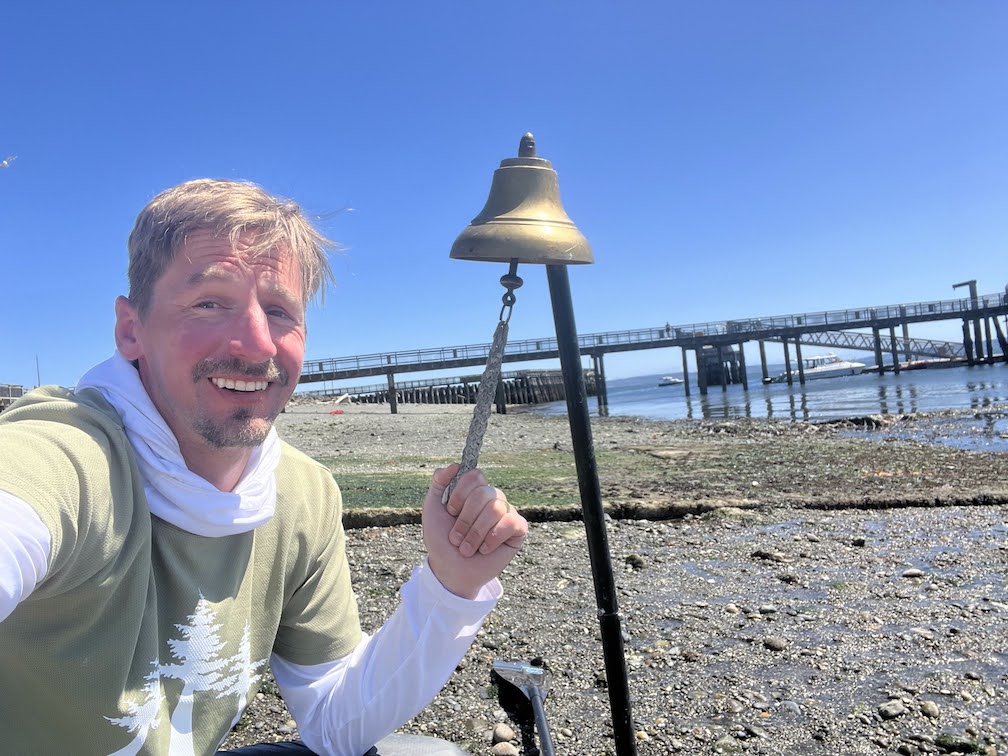
Goals
Results
- Enjoy being outside – ACCOMPLISHED
- Do something really hard – ACCOMPLISHED
- Do something new and learn some new skills – ACCOMPLISHED
- Finish the course (even if after the allowed time) – ACCOMPLISHED
- Officially finish (under the official 48 hour cutoff) – ACCOMPLISHED
- Finish in under 24 hours – Not Accomplished
- Finish in under 20 hours – Not Accomplished
Strategy
- Start slow, keep moving, and dig deep in the end. – ACCOMPLISHED
Tactics
- Eat 200 calories per hour – ACCOMPLISHED
- Refill water every 2 hours – ACCOMPLISHED
- Don’t exceed 140bpm – Not Accomplished
- Only stop on land three times – Not Accomplished
- Limit rest stops to 30 minutes – Not Accomplished
Successes
What am I proud of from race day?
- Found a way to finish
Failures
What areas could I improve for future races?
- Having to refill my water bottles every two hours was annoying and slowed me down, but carrying more than a liter on my body wouldn’t have been great, I should have run a longer line from the water bladder on the board to my mouth so I could drink without stopping
- Was really tired around 5-6am, should probably have had some more caffeine between 2-4am
- I should have brought my wheels, I figured I might need them
Thankfuls
What that was out of my control am I thankful for?
- People to suffer alongside
- Lot of safety crew out there to make sure everyone made it home safe
Frustrations
What that was out of my control do I wish had happened differently?
- That wind was a bit much
Race Recap
That was hard. I got what I wanted… and then some. It was also beautiful and, at times, peaceful.
This was my first SUP race and really first race on any sort of seafaring vessel. I figured most of the difficulty would lie in the energy output required for a long endurance race, which is an area I knew I’d be pretty strong at. That proved mostly correct. The one thing I didn’t account for was how much more of an impact weather and tides have on a boat race than those sorts of things do on a running race. In a running race, wind might slow you down 10% or so if it is really bad. In contrast, during this paddle race, the wind stopped us in our tracks between how it pushed against us and how it moved the water.
Pre-Race Notes
I’ve been pushing the limits of not training for races over the past five or six years. In 2016 when I trained for a marathon, I was running 6-7 days a week on a very regimented schedule. In 2017, for the same marathon, I tried a lighter training schedule that was only three days of running a week, and did surprisingly well. Then In 2018-2020 I started doing LONG races with only a few months of training a few days a week. This year was a whole new low, my training really only consisted of four big paddles, one 8 miler, two 14s and a 35 miler. I was doing some running and bootcamp style workouts a few days a week, but I was more or less winging it. What I was depending on was general fitness and knowledge of endurance events. What I was lacking was much experience SUPing on open water.
The Start
There were a decent bit more logistics in this race than what I’m normally used. For one, as a point to point race, I had to get my car parked near the finish line in Port Townsend, and then my body + SUP to the start line, in Tacoma, ~70 miles away. I didn’t have a crew or anything, but was able to get a ride back to the start from another local paddler who was coming to watch.
I grabbed some coffee at 6pm and began to get all ready for the paddle. Looking around I saw that of the 19 other SUPs, there were only three of us that were on 12’6″ or shorter length boards. The rest were all faster boards at 14′ or longer. That meant I would likely be holding down the rear until people started stopping to rest.
The bell rang at 7pm and we took off. This was my first time paddling with other people that were trying to go fast, so I was interested to see how my speed compared. Lots of crafts passed me and I ended up getting grouped up near a few other SUPers as we made our way Northwest from Tacoma.
As it grew darker, the moon was coming up above Mt. Rainier and the sunset colors were looming above the Olympics. Beautiful.
The wind picked up a bit and put some chop on the water but by dark it had calmed down and we found the shelter to the west of Vashon island. The race spread out a decent bit, you can see the fastest paddlers were to the end of the island by the time I got to the start of it. They were going about twice as fast and was thoroughly in the back of the pack. This is pretty typical for me in endurance races where I’ve learned the hard way that starting in the back usually means finishing in the middle.
Nighttime paddling was calm and uneventful. We each had to have a light on at all times, so you could see the other paddlers, but it was hard to catch them. Once and a while I’d get closer to someone and find they were sitting down and taking a rest or getting something from their bag.
I didn’t take any night pictures, but here is a photo of Blake Island (middle right) and the channel we were in (just past it) that I grabbed while flying over it recently.
One thing I’ve noticed about SUPing is the range of speeds are much tighter. Even a tiny bit of paddling energy will proper you around 2mph on flatwater and its hard to go much harder than 5mph (on my board at least) in an all out sprint. This compares to running where even 2mph requires a decent bit of energy, but at a sprint I can go 10-12mph.
Blake to Fay Bainbridge
By the time I got to Blake Island around 2am, I was getting pretty cold and ready for a bit of a rest. I spent 20 minutes on the island, which wasn’t bad for having to put on layers, go to the bathroom, send some texts home and refuel.
The miles after that weren’t super fast. The water was a bit churny with some mixing current. My miles were all in the 2-3mph range as opposed to the 3-4mph range of the hour prior. It is always hard to push through those wee hours of the night on an endurance event, but I was finding it especially tough on that day. I was sitting down some on my board a paddling with both sides of my paddle. I even laid down for a bit and am pretty sure I momentarily fell asleep while still paddling.
The sun coming up made things a bit easier to move again and the appearance of colors was certainly a welcome sight. A few people that knew one of the racers set up an aid station at Fay Bainbridge park though, which was the half way point, and I was excited to stop and recharge. By think point I had bonked a bit and needed food, and a reset.
I pulled in at 7am, exactly 12 hours into the race. I was on pace for a 24 hour finish, but I wasn’t doing great and didn’t think I could hold that pace much longer. An hour later, with a few cups of coffee and a bagel in me, I was feeling a bit better and ready to take on the second half of the race.
In retrospect, I’m glad I had stopped there for so long, pushing myself even more ragged wouldn’t have been a great idea with what was going to happen later that day.
Fay Bainbridge to Hansville
This next stretch was pretty, but more or less a slog. I was making decent time and just keeping at it. I kept food in and my head down. Thanks to hard work, a favorable tidal current, and glassy water, I recovered the hour I had lost at Fay Bainbridge and was back on track to finish in 24 hours by the time I made it to mile 50 thanks to a lot of miles in the high 3mph range and a few in the 4s.
As I turned the corner on Point No Point, the wind hit me a bit. I decided that rather than taking a straight line, I would hug a bit closer to shore.
I had planned to possibly stop at Hansgrill, but with the wind picking up, decided it would be best to push through a bit since I was feeling good. Lots of people were stopped there refueling and that is as far as many of them got – that ended up being a big spot for dropping out. The teams below with a line through their names all dropped out there, right in front of the store.
The Start of the Wind
I had been really good at cutting a straight line up until this point in the race. Looking back at my track, it would be hard to draw a straighter line around the curves of land than I had plotted. This strategy worked great when the water was calm, but with the afternoon wind picking up, and the current flowing at 2.2 knots against us, it was no longer going to work.
I pointed to Foulweather Bluff and after a bit of paddling, didn’t feel like I was making any progress. Sure enough, I hadn’t. I was getting held in place by he wind and all my energy was just pushing me away from shore. Had I not been so tired, I might have been able to make some progress against that wind, but you have to remember I’m about 18 hours into this race and mostly able to output in the endurance range of 120-140bpm. I instead took a straight line back to shore and figured I’d try to stay closer to land where there was some shelter from the wind and less water movement underfoot.
I found out later that another stand up paddler tried to cut a straight line, got pushed out like I had, but much farther and had to be rescued by a jet ski.
I hugged the shore and even walked my board some through knee deep water. As I got closer to the point I ran into two kayakers that were giving up. They said they had tried for an hour to get past the point and just gotten blown back. The weather said the wind was not letting up all night and so they were calling it quits.
This was dropout decision point number one and I wasn’t really even considering it.
I figured the least I could do was go a bit farther, wait a bit longer and see what developed.
I decided to just portage. I didn’t have that much gear. I had hoofed it with more before. I got everything into by bag, grabbed it and my paddle with one hand, grabbed the board with the other and started walking north towards the point on the rocky beach. It was slow going, but it was better than not moving.
At this point I’m 20 hours into the race and I’ve covered about 55 miles. I figured a few more hours and I’d be done. Little did I know this would actually be the half way point, time-wise, for me.
As I got to the point, I found five or six other racers stopped. Some looked like they were ready to camp for the nigh, they had sleeping bags and stoves out.
The End of the Race and the Start of the Adventure
I talked to two other SUPers and we decided it was worth seeing if we could make progress by carrying our boards around the the point to see if the crossing looked any different a bit farther south. The two advantage SUPs have over the other craft in the race is that they are easier to carry and they can’t sink, since there is no compartment to get filled with water. This meant the foul conditions were actually not as risky for us in many ways.
The bad thing, however, about SUPs is they are particularly bad at making progress into a headwind. Since you are standing, you are a giant sail in the wrong direction. Kayakers and rowers are sitting, so not as much wind pushes against them. They also usually sit lower in the water, which helps with the wind even more and helps stabilize them on the chop. The SUP trick in wind is to get down on your knees, which means less wind hits you, but it also makes it harder to paddle. If it is really bad, you can lie down and paddle like you’re on a surfboard with your hands- that is colder (since you get pretty wet) and slower, but sometimes the only way to make progress.
As we approached the crossing from Foulweather Bluff, the wind shifted a bit so that instead of blowing directly into us, it was coming a bit more from the side. It looked like it might be possible to get across. I felt this crossing was an important step and that it was worth some risk to get across before the wind picked up and before it got dark. If we tried to walk from where we were, we’d have to go around a peninsula, which would have made the distance about 40 miles. If we got across, it was only about a 15 mile walk, if it came to that, and paddling might be possible using some sheltered coves. It seemed that if we tried crossing and couldn’t fight the wind, we at least had a shot of moving perpendicular to the wind and moving southwest.
We decided we’d go for it. We figured if it got bad we could get wet and prone paddle. If it got really bad, we’d get blown back to shore and we could call to drop out and go home, knowing that we tried our hardest. This was dropout decision point number two and there was some thought put into it, but I decided to proceed.
We were able to make decent progress, mostly on our knees and an hour and a half later, we were across. It was a hard won crossing though. On the other side we took a break on a beach, ate some food and then decided to keep moving. It was now 7pm, 24 hours since we had started.
A Failed Crossing
We could see the bridge over The Cut – the boat channel we need to go across. We tried to paddle straight for it on our knees, but after 20 minutes of hard effort through waist high rollers, I realized we were getting pushed away back towards Widbey Island. I pointed a straight line back to shore and figured I’d get to the protection of the shallows and move slowly towards our goal from there.
The sun was starting to go down and the moon was coming up, hanging eerily orange over us to the south.
We worked our way along the shallows for two and a half more hours before finally getting to the boat channel. Thankfully we got more and more protection from the wind as we went.
A straight line from Hansville to The Cut is 5 miles. That would have taken me an hour and a half, or less, in calm conditions and I would have gotten to the finish by about 3pm, on pace to finish in under 24 hours. Due to the wind, I had to take a less efficient course and travelled 15 miles over the course of 9 hours. 3x distance inefficiency and 6x time inefficiency. Here you can compare my course line (green) to one of the faster paddlers (blue).
The Long Night
At about 10:30pm we reached the Cut, the boat channel we needed to go through before we got to the final bay. The three of us tried to paddle through it and couldn’t make progress between the wind and current pushing through there. It was dark and getting cold and this was another moment of decision.
One of the paddlers I was with fell in the water and decided he was done. He felt he wasn’t going to be able to get warm again and called his wife to come pick him up. This race was really unique in that we were very close to civilization, but weren’t allowed to accept support. It meant we were never in real life threatening danger but that dropping out was very easy and tempting. Once he got in the car, his race was done, but he was warm and safe again.
I could have gone home then. I could have called it. I had paddled through one night and until late in the night the next day. The wind was stopping me in my tracks. This was dropout decision point number three and I really didn’t put much thought into it.
I decided I could still go on, but that I wasn’t going to be able to finish that night. I needed to wait for the current to change and help counter the wind and that didn’t happen until about 3am. I also figured it would be good to attempt the final miles in the sunlight, which would make it much easier to see. At this point I had been awake for nearly 40 hours as well, and was starting to hallucinate a bit, so I thought sleep would be a good idea.
The other paddler I was with, William of team Banana Slug, was getting cold and went for a walk to try and warm up. His plan was to keep moving and then try and cross The Cut as soon as possible, in the dark.
I ate some food, put on all of my layers and did squats to get my body temperature up and then lay down in the sand behind a log that gave me some shelter from the wind.
An hour or so later I woke up cold. I did more squats and repeated until the morning. Sorry for the blurry photo, it was hard to hold still from all of the shivering…
The Longest 5 Miles
As it began to get lighter around 5am I woke up from a particularly deep bit of sleep and was completely confused about where I was. Sometimes this happens to me. I was cold and wet and looking at some waterway I had never seen before. It was very disorienting and I panicked a bit. Then as my mind woke up I slowly realized where I was and was overcome by a mix of emotions. I was upset at myself for once again ending up in some stupid situation like this where I was cold and alone and a long way from any creature comforts. But I was also excited that I had another chance to finish the race and I was relieved it was a bit less windy than the night before and the tidal current was moving in the right direction across the channel.
With the help of the moving water, I was able to make it across against the wind and once on the other side I hung to the left to go towards the marina and a few buildings. I saw William paddling, and found out he had made the crossing and then struggled with the wind and found a dock to rest on until light. Not far ahead of us was “Slowly But Shelby” who we had seen the afternoon before on the beach, and who had passed us during the night. It turns out a few people had gotten stuck there and decided to camp the night to wait for the current to change.
I stopped at a beach near the buildings and was really hoping the one with tables outside was a breakfast place where I could get a hot cup of coffee and some pancakes. It was just a bar though and didn’t open until 5pm, so no such luck. I refilled my water bladder from their hose and kept going.
From here it was a 5 mile straight shot north to the finish line. Again, this would have taken me an hour and a half in calm morning conditions of most days, but with that wind it was going to be more difficult. Even more difficult was the direction of the wind, which was blowing southeast. That meant if I attempted the paddle north and failed against the wind, I’d get pushed east into the US Naval base, which was somewhere we were told on very clear terms not to go near. Apparently a few paddlers had been too close to it in a prior year and a military ship approached them with guns lowered. I did not want to end up stranded on the shores there. Trespassing on a military facility is one of the things I try to avoid doing.
Instead I decided to stick close to the western shore of the bay, which was the longer way around. As I measure it now, it looks around 9-10 miles.
I was able to paddle for a bit until Kala point, protected by that landmass, but once around it, I was looking at a three mile stretch that pointed directly northwest, perfectly opposite to where the wind was blowing. The wind was getting channeled through here and was blowing so hard I could hardly carry my SUP. When I would pick it up, it would get ripped form my hands by the wind if I didn’t angle it just right. So I would pick up the board, walk a hundred yards, have it blown up by a gust of wind, try to recover it and then repeat.
I was moving at about 1mph. After a few hundred yards of that I stopped to figure out a better plan.
I called the race director to understand some specifics. I explained where I was, let him know I was safe and then asked ‘what percentage of my vessel must cross the finish line for it to count?’. He was pretty confused and confirmed that he had never before been asked that question. I clarified that I was just going to walk the 6 miles to the finish and would like to do so with as little as possible. I wanted to know if I could just bring the fin of the board or something and have it count. He made the decision that since this was a boat race, he really expected me to cross the finish line on my boat and that given we still had 11 hours left, it seemed like I still had a shot, even if I had to portage the full six miles.
This was dropout decision point number four and I almost dropped out here. What was required to finish didn’t really make much sense. It wasn’t a stand up paddle event at this point – I was carrying my SUP on the beach. Nor was it really a race – if I were going for time, the fastest method would be to run. At this point this was just some stupid arbitrary challenge to move to a specific point with a bunch of gear. Nonetheless I pushed persisted.
Resigned to walking, I stashed everything that wasn’t critical under a bench so that my load was as light as possible and proceeded to walk into the wind on the beach. Families were out walking their dogs and digging for shellfish as I stomped up the beach into the wind, carrying a huge SUP and looking miserable. A few of them knew about the race and were surprised we were still at it with the way the weather had been for the last day.
The beach ended at the easternmost point where the paper mill sits. The smoke coming out of the stacks was blowing nearly horizontal. I noticed the wind had shifted a bit though and was more eastwardly. That meant I could paddle the final stretch with it mostly to my back.
The final three miles were an easy paddle where most of my energy went to paddling north to keep the wind from blowing me out away from the land and towards Widbey Island.
Team Banana Slug and I grouped up for a finisher photo after spending the last 24 hours going from strangers to comrades in suffering.
Looking Back
Those that finished before the wind are awesome athletes. They had to be fast to get that far by that time. From looking at the map I see those teams were able to draw a straight line. It looks like team Kats from Kansas was the last team with a nice straight line, though I’m sure they struggled that last hour into the wind. They finished 46th.
Of the 85 other teams that hadn’t finished by then, 24 would go on to finish. The overall race had a finish rate just over 50% this year (compared to 90% last year), but of the folks facing the wind, the finish rate was 28%. Those of us that finished after had to be tough as nails and unwavering in our focus. You can see us paddling a less efficient line, stuck on the shore from the wind.
I’ll sign off by leaving you with my fitness app’s assessment of this race.
I concur.
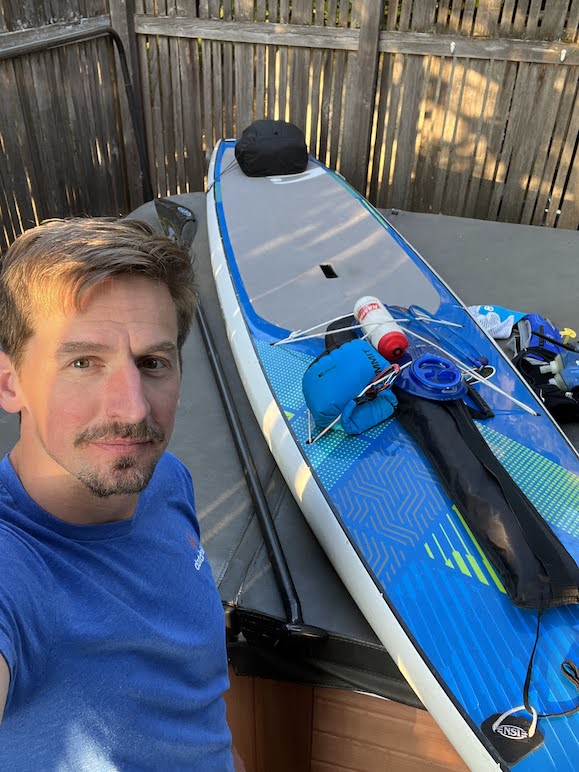
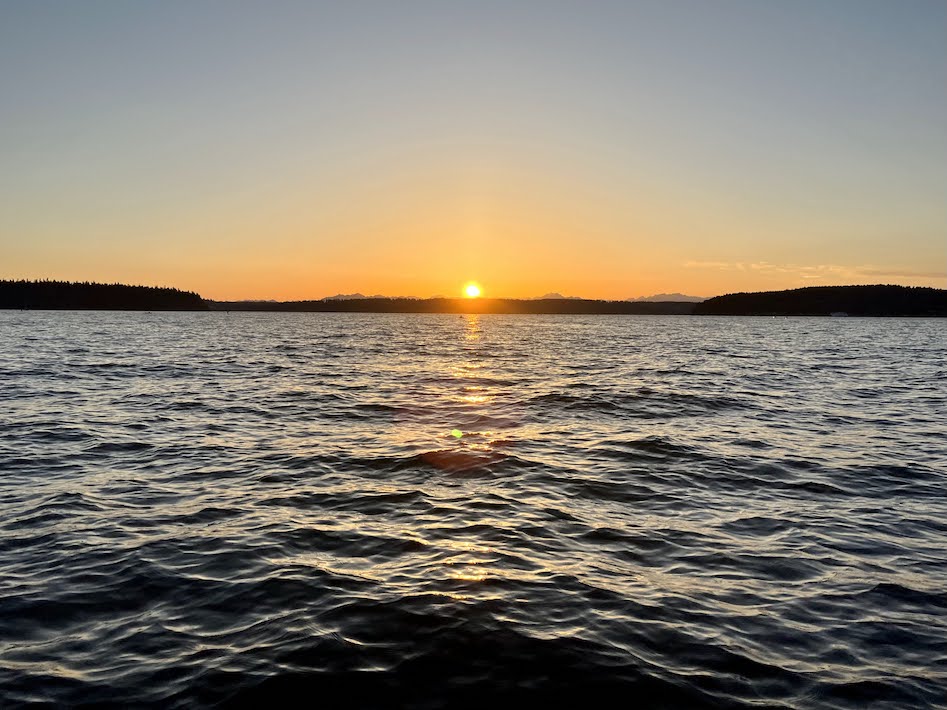
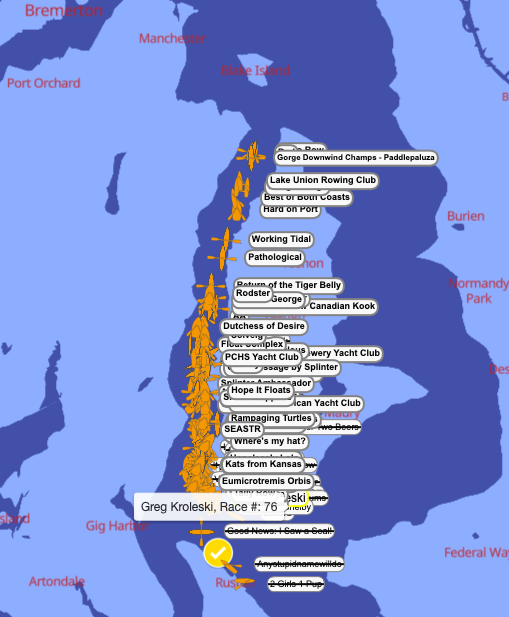
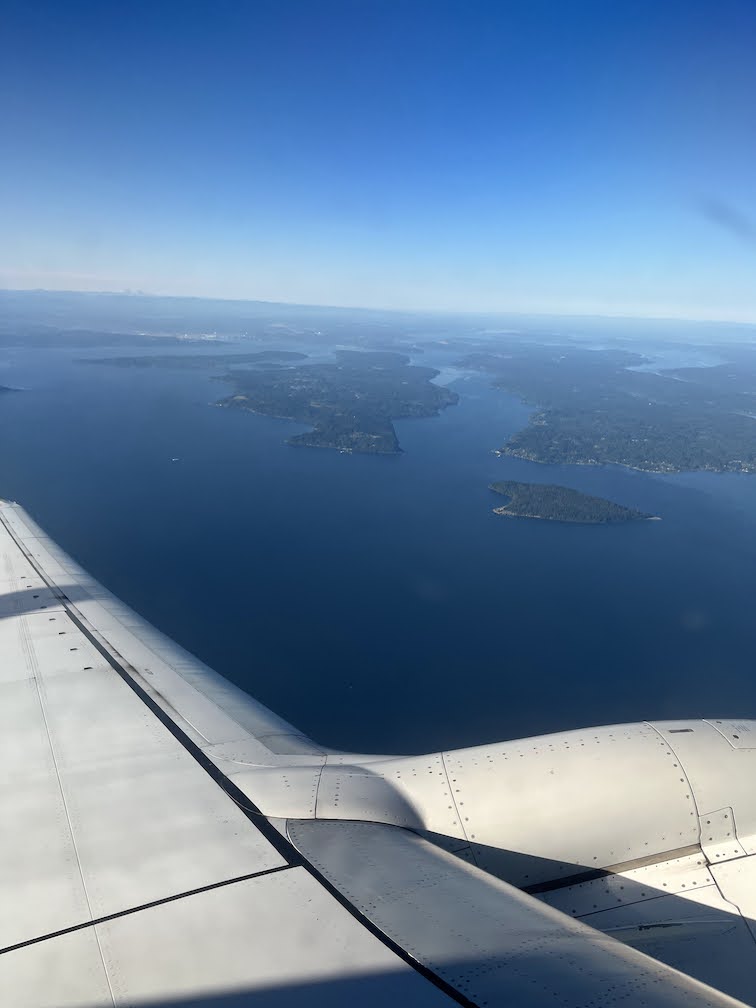
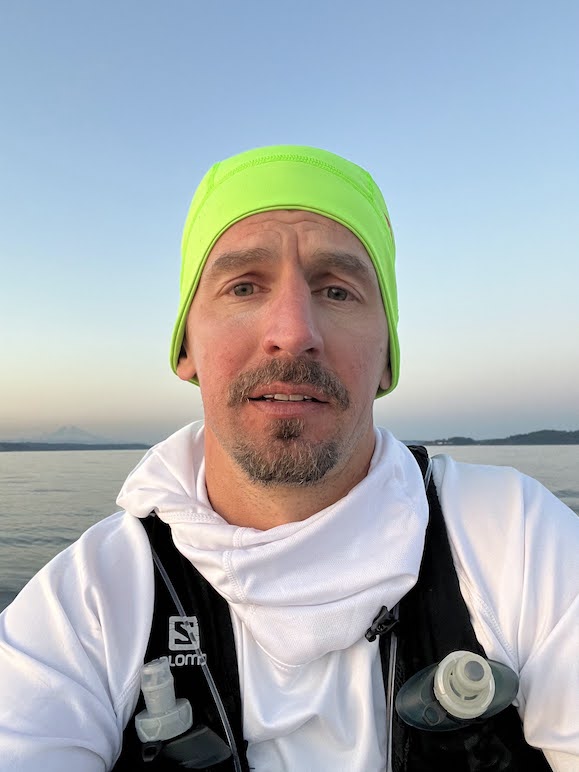
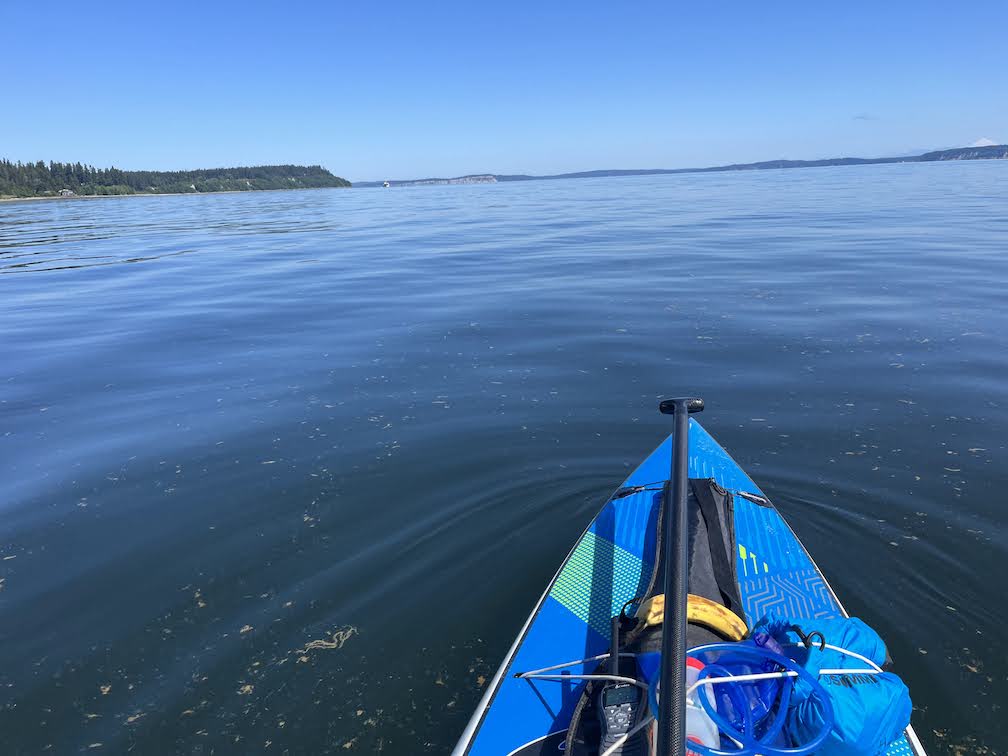
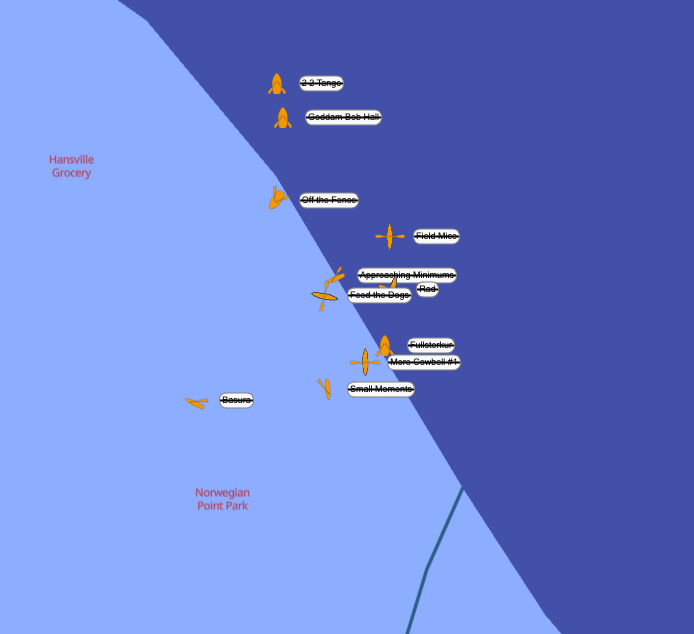
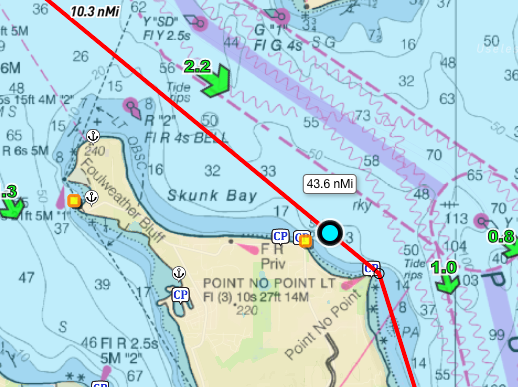
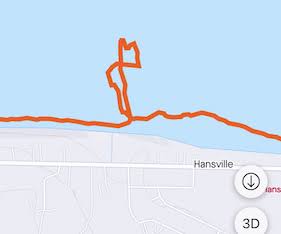
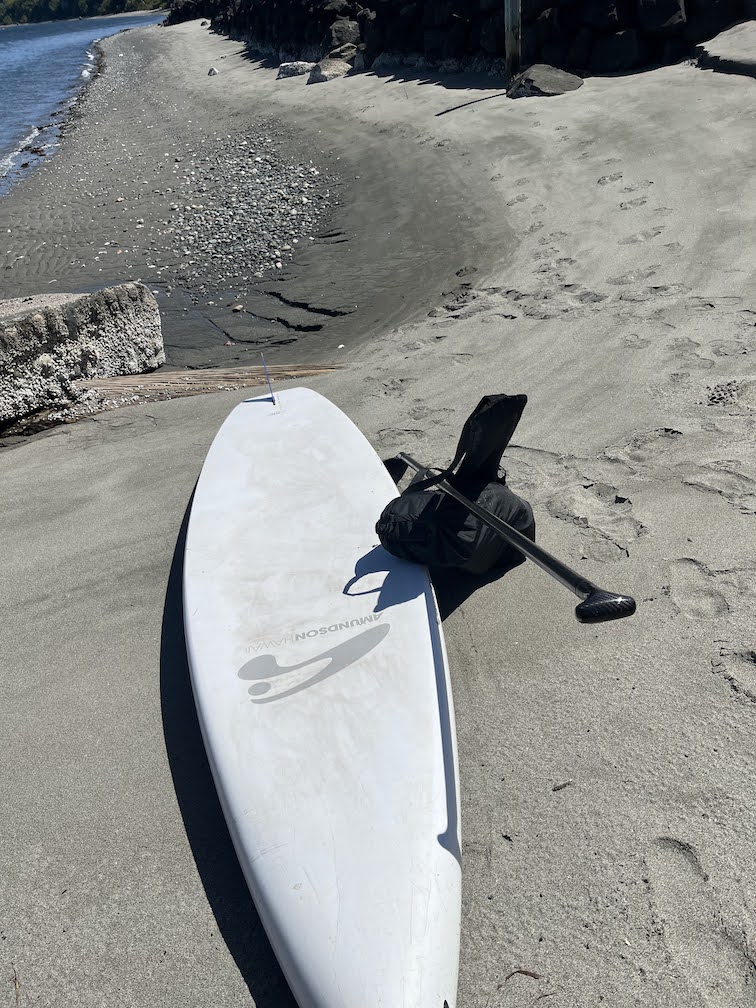
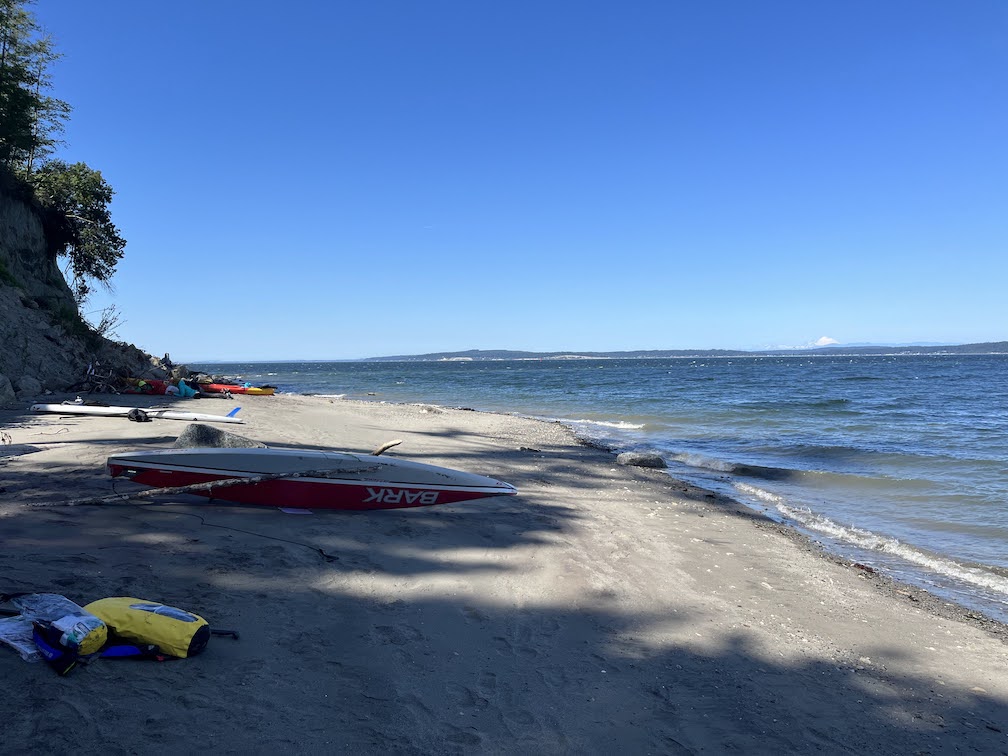
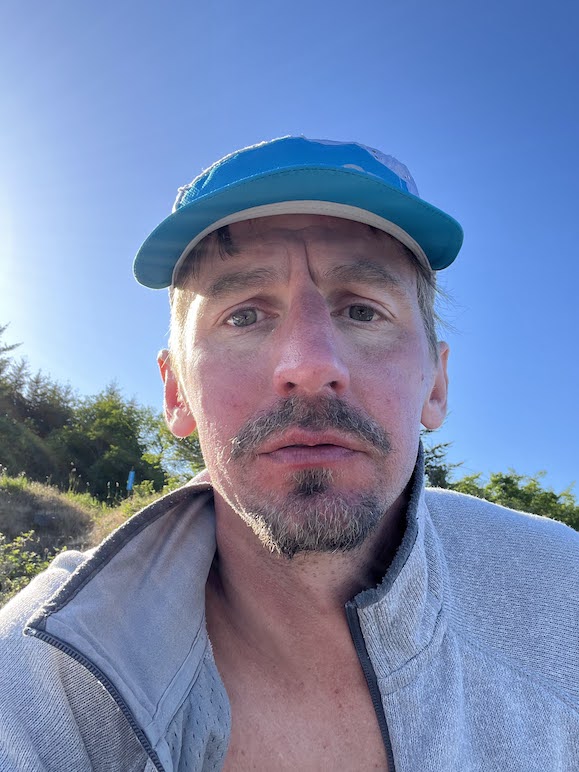
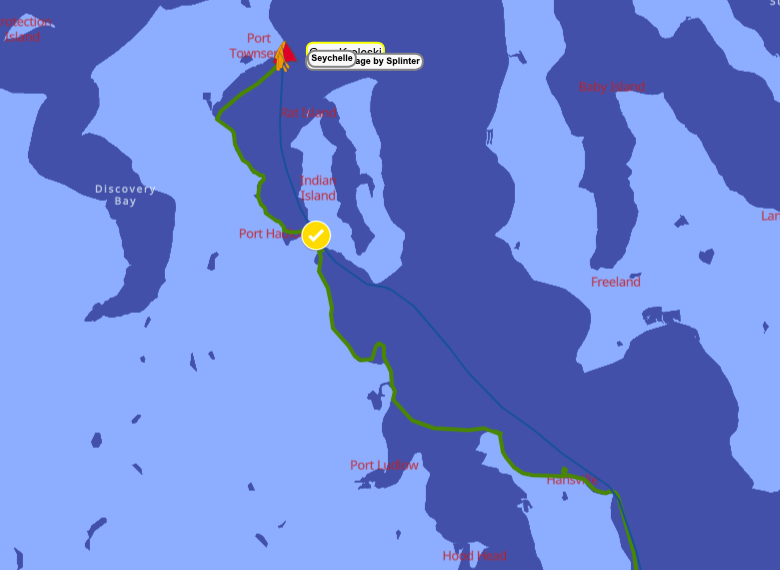
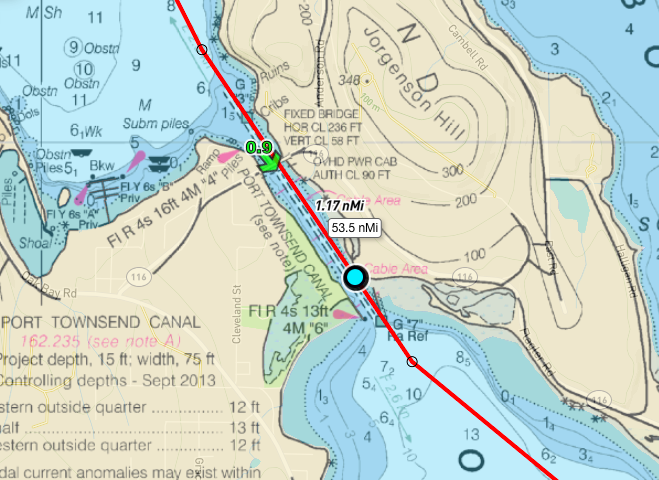
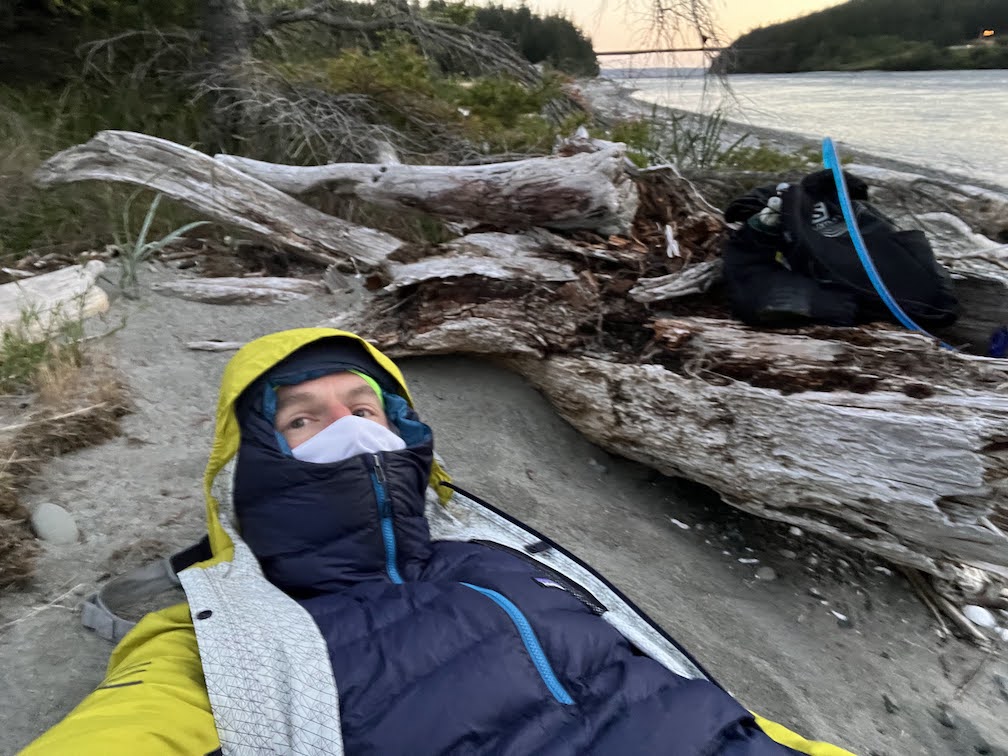
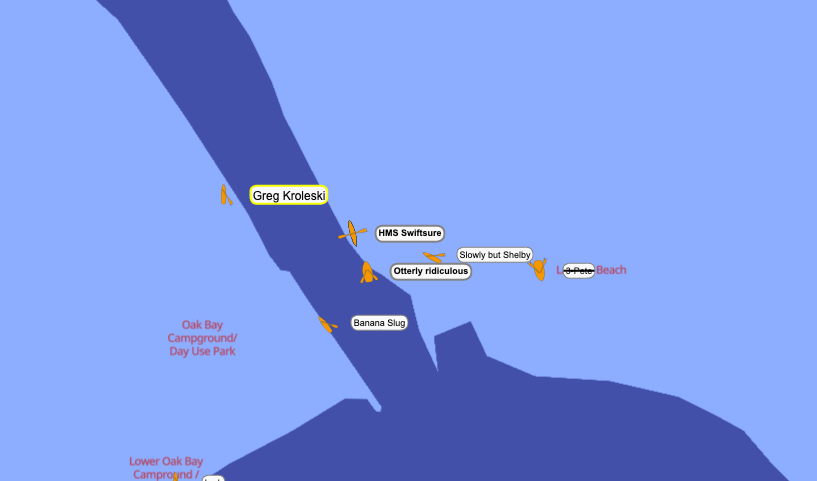
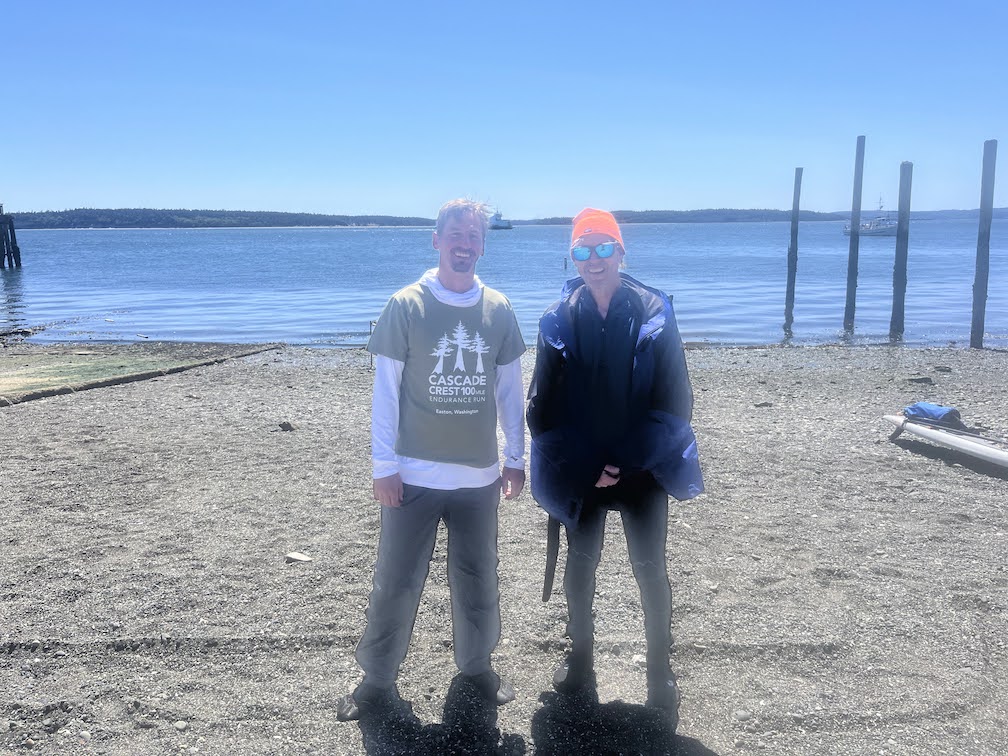
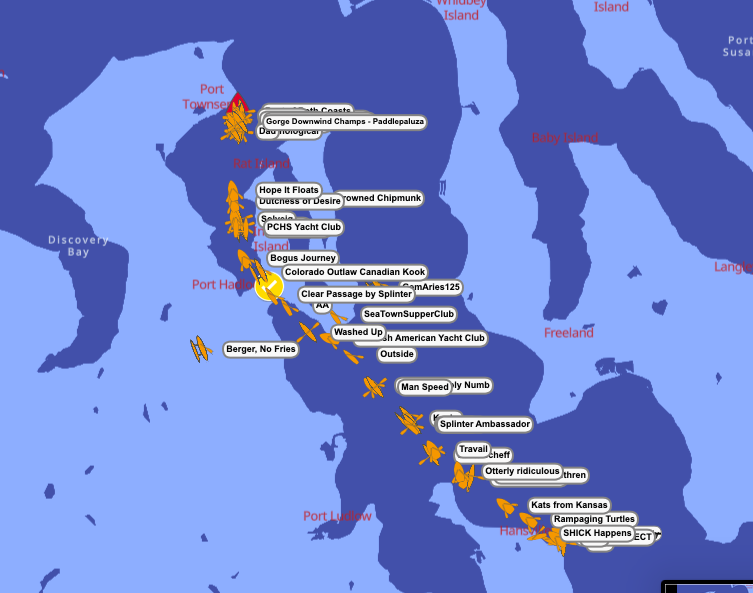
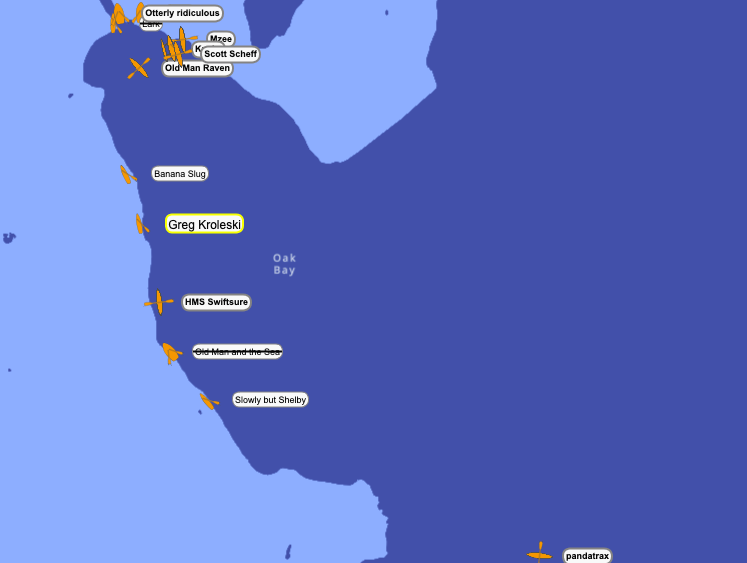

One thought on “Race and Adventure Report: Seventy 48 – 2023”